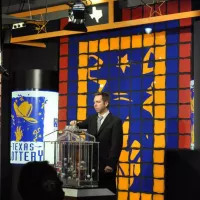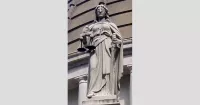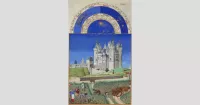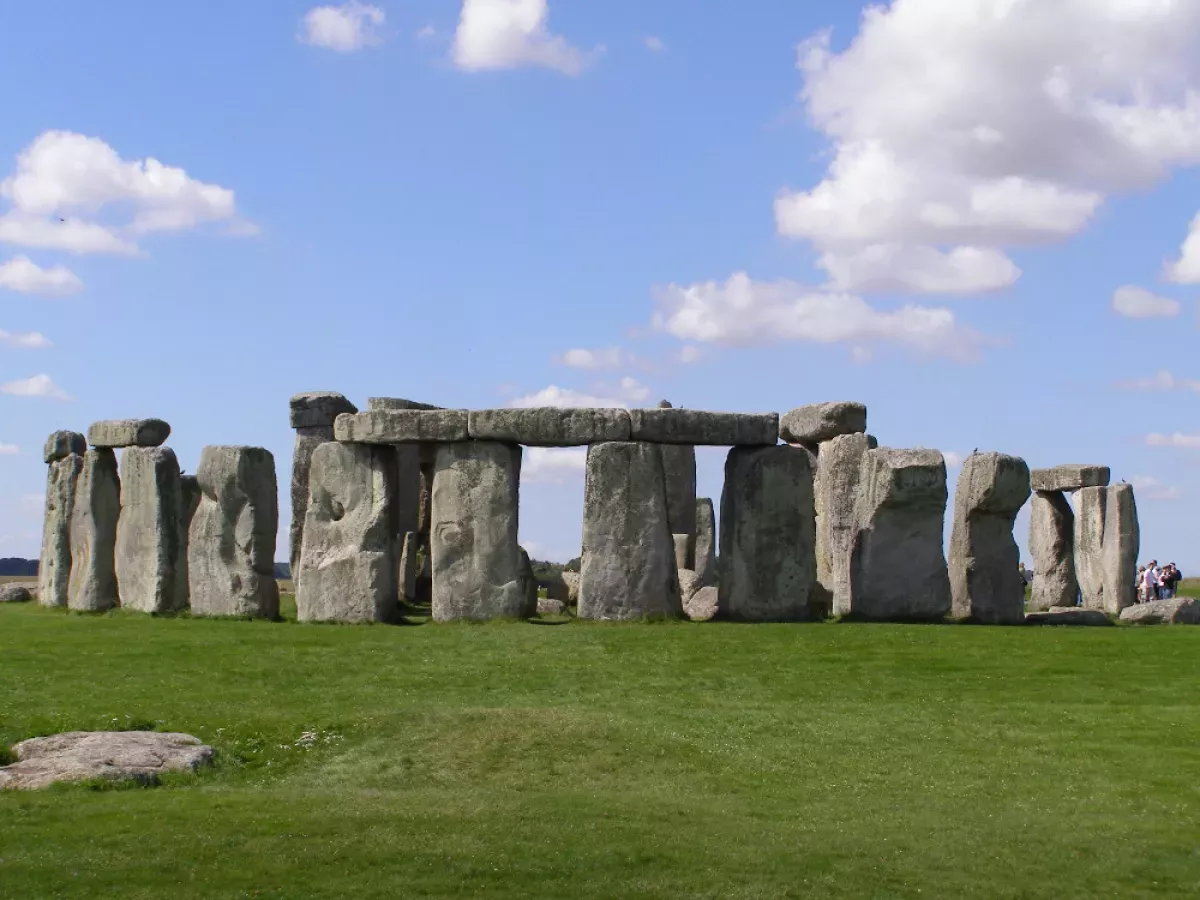Stonehenge is a prehistoric monument located in Wiltshire, England, consisting of massive standing stones arranged in a circular pattern. The outer ring is made up of sarsen stones, each weighing about 25 tons, connected by horizontal lintel stones. Inside are smaller bluestone circles and trilithons, formed by two vertical stones supporting a lintel. Now in ruins, Stonehenge is aligned with the summer solstice sunrise and winter solstice sunset. The monument is surrounded by numerous burial mounds (tumuli) and is at the heart of a dense collection of Neolithic and Bronze Age archaeological sites.
December 1900: Stone 22 Collapses
Stonehenge suffered damage on December 31, 1900, when Stone 22 fell during a severe storm.
1901: Gowland's Restoration and Excavation
William Gowland directed the first major restoration of Stonehenge in 1901, which involved straightening and securing sarsen stone number 56. He also conducted extensive excavations, revealing significant information about the monument's construction.
August 1905: Neo-Druidic Initiation Ceremony
In August 1905, the Ancient Order of Druids conducted a mass initiation ceremony at Stonehenge, inducting 259 new members, marking an early instance of Neopagan use of the monument.
September 1915: Stonehenge Auction
Stonehenge, along with a portion of the surrounding land, was put up for auction in September 1915 by Sir Cosmo Gordon Antrobus.
1920: Hawley's Excavations at Stonehenge
William Hawley carried out excavations at the base of six stones and the outer ditch of Stonehenge in 1920. His work uncovered various features, including a bottle of port left by Cunnington, Aubrey's pits, and the Y and Z Holes.
1920: Excavation by William Hawley
William Hawley conducted excavations at Stonehenge in 1920, during which he exhumed cremated bone fragments from the Aubrey holes. He considered these remains unimportant, and they were later re-interred.
1921: Free Admission for Local Residents
An agreement dating back to 1921 grants approximately 30,000 local residents free admission to Stonehenge.
1923: Excavation of a Saxon Man
In 1923, a significant archaeological discovery was made at Stonehenge with the excavation of a decapitated seventh-century Saxon man.
August 1927: Subscription Fund Launched
In August 1927, a subscription fund was launched to purchase the land around Stonehenge and prevent development, aiming to "save the skyline" of the monument.
October 1927: Subscription Fund Success
By October 1927, the subscription fund to protect Stonehenge had raised enough money to purchase Plot A, leading to the start of the aerodrome's demolition.
1927: Auction of Stonehenge's Surrounding Land
In 1927, the land surrounding Stonehenge was divided into three plots and put up for auction, attracting interest from developers.
1929: Fundraising Continues for Land Preservation
Fundraising efforts to secure the remaining land surrounding Stonehenge continued through 1929, demonstrating a commitment to preserving the monument's landscape.
1930: Stonehenge Aerodrome Removal
The last large aircraft hangar from the Stonehenge Aerodrome was removed in 1930, and the site was fully cleared by the mid-1930s, marking a significant step in preserving the monument's historical landscape.
1935: Cremated Remains Reinterred in Aubrey Holes
Cremated remains, potentially from earlier excavations, were reinterred in several Aubrey Holes at Stonehenge in 1935.
1935: Re-internment of Cremated Remains
In 1935, the cremated bone fragments previously excavated by William Hawley were re-interred together in Aubrey Hole 7.
1958: Extraction of Core Sample
A core sample was extracted from one of the sarsen stones at Stonehenge in 1958. This sample played a crucial role in later analysis to determine the origin of the stones.
1958: Restoration of Southwest Trilithon
The southwest trilithon at Stonehenge, which had collapsed in 1797, was restored to its upright position in 1958.
1963: Stone 23 Restored and More Stones Secured
Stone 23 of the Sarsen Circle at Stonehenge fell over and was re-erected in 1963. During this restoration, three more stones were also secured with concrete.
1966: Discovery of Mesolithic Postholes
Excavations led by Faith and Lance Vatcher in 1966, conducted before the construction of a new car park, uncovered Mesolithic postholes dating back to 7000-8000 BC.
1967: Discovery of Palisade Ditch
In 1967, Faith and Lance Vatcher unearthed a 10-meter section of a palisade ditch, a trench containing decayed timber posts, dating back to the Mesolithic period. Subsequent aerial archaeology suggests this ditch extends from the west to the north of Stonehenge, near the avenue.
1972: Stonehenge Free Festival Begins
The Stonehenge Free Festival, a gathering with roots in Neopaganism and New Age beliefs, began in 1972, significantly increasing the number of visitors to the site during the summer solstice.
1977: Restricted Access to Stonehenge Stones
To protect the stones from erosion, direct access to touch or climb on the Stonehenge monument was restricted in 1977. Visitors were no longer allowed to touch the stones but could view them from a distance.
1978: Discovery of the Stonehenge Archer
During excavations in 1978, Atkinson and John Evans made a significant discovery—the remains of the Stonehenge Archer—in the outer ditch of the monument.
1979: New Stone Hole Discovered Near Heel Stone
An accidental discovery was made in 1979 during cable-laying work near the Heel Stone. A mistakenly dug ditch revealed a previously unknown stone hole adjacent to the Heel Stone, prompting rescue archaeology.
1984: Stonehenge Free Festival Ends
The Stonehenge Free Festival, popular among Neopagan and New Age groups, came to an end in 1984 after attracting tens of thousands of attendees.
1985: Closure of Stonehenge to Festivalgoers & "Battle of the Beanfield"
In 1985, a High Court injunction prohibited festivalgoers from accessing Stonehenge, leading to a violent confrontation between police and New Age travellers known as the "Battle of the Beanfield."
1986: UNESCO World Heritage Site
Stonehenge and its surrounding area were designated as a UNESCO World Heritage Site in 1986.
1993: House of Commons Criticises Stonehenge Presentation
The House of Commons Public Accounts Committee criticized the way Stonehenge was presented to the public in 1993, deeming it "a national disgrace."
1995: Megalith Transport Experiment
In 1995, a successful experiment was conducted near Stonehenge to demonstrate a possible method used by prehistoric people to move megaliths. A team of over 100 workers moved a 40-ton stone slab on a sleigh along an 18-mile track.
1995: Publication of "Stonehenge in its Landscape"
In response to criticism, English Heritage commissioned research to compile all archaeological work at Stonehenge. This project led to the 1995 publication of "Stonehenge in its Landscape," presenting the site's stratigraphy, finds, and a revised chronology of the monument.
1998: Limited Access Granted for Religious Groups
Following a European Court of Human Rights ruling, limited access to Stonehenge was granted to religious groups, including Neo-Druids and Pagans, for worship purposes. In 1998, a group of 100 individuals, including archaeologists, astronomers, and representatives from various faiths, were permitted access.
2000: Open Summer Solstice Event
An open summer solstice event was held at Stonehenge in 2000, attracting approximately 7,000 attendees.
2001: Increased Attendance at Summer Solstice
The number of people attending the open summer solstice event at Stonehenge increased to around 10,000 in 2001, demonstrating the growing popularity of such gatherings.
2003: Stonehenge Riverside Project Begins
The Stonehenge Riverside Project, led by Mike Parker Pearson, was initiated in 2003. This research endeavor focused on investigating other monuments in the surrounding landscape and their connection to Stonehenge, particularly Durrington Walls.
2004: English Heritage Publishes Restoration Photos
Responding to criticism about the lack of public knowledge regarding Stonehenge's restorations, English Heritage included photographs of past restoration efforts in their 2004 book "Stonehenge: A History in Photographs."
2006: National Geographic Survey Ranks Stonehenge
A 2006 National Geographic survey ranked Stonehenge 75th out of 94 leading World Heritage Sites, citing concerns about the impact of nearby roads and describing the site as being "in moderate trouble."
December 2007: Cancellation of Road and Visitor Centre Plans
In December 2007, plans for a Stonehenge road tunnel and a permanent visitor centre were cancelled following controversy surrounding the project's cost and potential impact on the landscape.
April 2008: Dating of Bluestones and Discovery of Organic Material
Tim Darvill and Geoff Wainwright conducted excavations within the stone circle in April 2008. Their work enabled the dating of some bluestones to 2300 BC and unearthed organic material from 7000 BC, further supporting the site's use thousands of years before Stonehenge's construction.
May 2008: License Granted for Removal of Human Remains
The Ministry of Justice issued a license in May 2008 permitting the removal of human remains at Stonehenge for archaeological purposes. The license stipulated that the remains be reburied within two years and treated with respect and dignity.
September 2008: Excavation of Aubrey Hole 7 and Reburial of Remains
In September 2008, Julian C. Richards and Mike Pitts excavated Aubrey Hole 7, retrieving cremated remains previously interred there in 1935. This action was performed under a license granted by the Ministry of Justice, requiring the respectful reinterment of the remains within two years.
2008: Discovery of New Avenue and Circular Area
As part of the Stonehenge Riverside Project, a new "Avenue" leading to the River Avon was discovered at Durrington Walls. Excavations at the point where the Stonehenge Avenue intersects the river revealed a previously unknown circular area, suggesting the presence of four additional stones, likely marking the avenue's starting point.
April 2009: Discovery of Shallow Mound and Circular Banks
A landscape investigation in April 2009 led to the identification of a shallow mound between stones 54 and 10, distinct from the natural slope. Additionally, circular banks were found between and within the Y and Z hole circles, possibly representing spoil heaps or remnants of vegetation used to screen activities.
May 2009: Government Approves New Visitor Centre Scheme
In May 2009, the government granted approval for a £25 million project to construct a smaller visitor centre and close the A344 road, subject to funding and local authority planning permission.
January 2010: Planning Permission Granted for Visitor Centre
Wiltshire Council granted planning permission for the visitor centre, located 1.5 miles to the west of Stonehenge, in January 2010. English Heritage confirmed funding for the project, including a £10 million grant from the Heritage Lottery Fund.
2010: Discovery of Nearby Henge-like Monument
In 2010, the Stonehenge Hidden Landscape Project made a significant discovery—a "henge-like" monument situated less than 0.62 miles from Stonehenge. This new monument was identified as being located at "Amesbury 50," a round barrow within the Cursus Barrows group.
2010: Stonehenge Hidden Landscape Project Begins
The Stonehenge Hidden Landscape Project was launched in 2010. The project employed non-invasive geophysical imaging techniques to reveal and recreate the surrounding landscape.
November 2011: Discovery of Two Huge Pits at Stonehenge
In November 2011, archaeologists from the University of Birmingham discovered evidence of two large pits positioned within the Stonehenge Cursus pathway. These pits are astronomically aligned with the midsummer sunrise and sunset when viewed from the Heel Stone.
December 2011: Discovery of Rhyolite Fragment Source
In December 2011, geologists identified the source of some rhyolite fragments found at Stonehenge as a rock outcrop called Craig Rhos-y-felin in north Pembrokeshire.
2011: Discovery of Bluestone Quarry
The 2011 discovery of a megalithic bluestone quarry at Craig Rhos-y-felin, near Crymych in Pembrokeshire, provided significant evidence for the long-distance human transportation theory of Stonehenge's bluestones.
June 2013: Closure of A344 Road Begins
The A344 road was closed in June 2013 to facilitate its removal and replacement with grass, as part of the visitor centre project.
December 2013: New Visitor Centre Opens to the Public
Designed by Denton Corker Marshall, the new visitor centre for Stonehenge was officially opened to the public in December 2013.
2013: Excavation of Cremated Remains
A team of archaeologists led by Mike Parker Pearson unearthed over 50,000 cremated bone fragments from 63 individuals buried at Stonehenge in 2013. Analysis suggested that the cremated individuals were almost equally men and women, with some children, and were likely buried around 3000 BC.
2013: Discovery of Potential Missing Sarsens
An exceptionally dry summer in 2013 exposed patches of parched grass that might indicate the positions of absent sarsens at Stonehenge, challenging the prior belief that the ring could have been left unfinished.
2013: Discovery of Mesolithic Postholes
In 2013, archaeologists discovered four, potentially five, Mesolithic postholes dating back to 8000 BC while working in the old tourist car park close to Stonehenge. These postholes held large pine posts, suggesting a potential ritualistic alignment.
2014: Discovery of Adjacent Structures and Burial Mounds
In 2014, the University of Birmingham announced findings of stone and wooden structures and burial mounds near Durrington, potentially dating back to 4000 BC. The discovery suggests a complex of related monuments.
2017: Studies on Bluestone Origins
Between 2017 and 2021, research led by Professor Parker Pearson from UCL proposed that the bluestones at Stonehenge were relocated from a stone circle of the same size as the first known Stonehenge circle at Waun Mawn in the Preseli Hills, Wales. This theory is supported by evidence of the circle's dismantling around 300-400 years after its erection around 3400-3200 BC, aligning with Stonehenge's estimated construction timeframe.
2017: Excavations at Waun Mawn Begin
Excavations led by Professor Parker Pearson's team commenced at Waun Mawn, a stone circle site in the Preseli Hills, in 2017.
2018: Waun Mawn as Potential Bluestone Source
Continued excavations in 2018 at Waun Mawn suggested it might have housed a stone circle the same size as Stonehenge's original bluestone circle, both oriented toward the midsummer solstice.
2018: Strontium Analysis of Remains
In 2018, analysis of the strontium content in the cremated remains found at Stonehenge indicated that many individuals buried there around the time of construction likely originated from near the source of the bluestones in Wales and had not lived in the Stonehenge area for an extended period before their deaths.
2019: Discovery of Megalithic Quarrying Evidence
The discovery of Megalithic quarrying evidence at quarries in Wales identified as a source for some of Stonehenge's bluestones in a 2019 publication provided further support to the theory that these stones were quarried by humans and not transported by glacial action.
July 2020: Origin of Sarsen Stones Confirmed
A study in July 2020 confirmed that the large sarsen stones at Stonehenge originated from West Woods, about 15 miles north of the site.
November 2020: Approval of Tunnel Construction Plan
In November 2020, plans for a four-lane tunnel beneath Stonehenge to eliminate the A303 road section were approved, despite opposition from archaeologists, environmentalists, and druids.
February 2021: Discovery of Neolithic and Bronze Age Artifacts
Archaeologists uncovered "vast troves of Neolithic and Bronze Age artifacts" during excavations for the proposed highway tunnel near Stonehenge in February 2021, including Bronze Age graves and a late Neolithic pottery.
2021: Waun Mawn Circle Incomplete
In 2021, Parker Pearson's team concluded that the Waun Mawn stone circle was never finished, and a maximum of 13 stones were removed in the past.
2021: Completion of Bluestone Origin Studies
See 2017.
2021: High Court Overturns Tunnel Plans
The High Court overturned the initial planning application for the Stonehenge road tunnel in 2021.
January 2022: Discovery of Prehistoric Pits
In January 2022, thousands of prehistoric pits were discovered around Stonehenge, with one dating back 10,000 years and containing hunting tools.
July 2023: Road Tunnel Plans Re-Approved
Despite being overturned in court in 2021, the UK's Transport Secretary approved plans for a 2-mile road tunnel near Stonehenge in July 2023.
February 2024: High Court Rejects Bid to Stop Tunnel
The High Court in London dismissed a legal challenge by campaigners attempting to halt the construction of the road tunnel in February 2024.
June 2024: Stonehenge Defaced by Activists
Just Stop Oil activists vandalized Stonehenge with orange paint on June 19, 2024, to protest government inaction on climate change, prompting their arrest and an investigation into the damage.
Mentioned in this timeline

A car also known as an automobile is a wheeled...

Books are a means of storing information as text or...
Climate change encompasses global warming and its far-reaching effects on...

A lottery is a gambling system where numbers are randomly...

Justice in its broadest sense is the concept of treating...

September is the ninth month of the year in the...
Trending

7 months ago Harrison Ford and Gene Simmons to be honored by Operation Smile for charity.

4 months ago Celebrating Chris Hemsworth's Birthday: Iconic Roles from Thor to Extraction and Beyond

5 months ago Sizzling Sunday with Showers; Rain Chances Next Week and Summer Pattern Returns
24 days ago Alabama Power Announces Electricity Rate Freeze Through 2027 Amid Budget Concerns.
6 months ago China and Taiwan tensions escalate, with Taiwan seeking unity amidst threats.

14 days ago Jayson Tatum Wants to Play with Son Deuce in NBA for Ten More Years.
Popular

Candace Owens is an American conservative political commentator and author...

Tucker Carlson is an American conservative political commentator known for...

XXXTentacion born Jahseh Dwayne Ricardo Onfroy was a controversial yet...

Ilhan Omar is an American politician currently serving as the...

Kashyap Pramod Patel is an American lawyer who became the...

Bill Gates an American businessman and philanthropist revolutionized personal computing...
